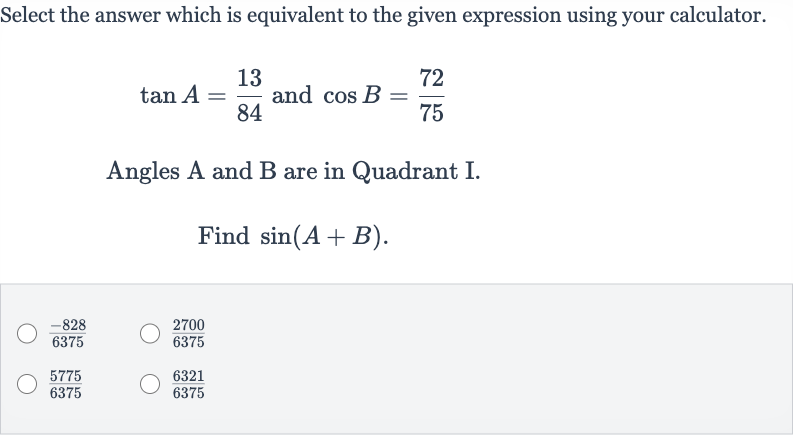Full solution
Q. Select the answer which is equivalent to the given expression using your calculator.Angles A and B are in Quadrant I.Find .
- Find sine values: Use the given values to find and . We are given and . Since and are in Quadrant I, both sine values will be positive. To find , we use the Pythagorean identity: . We can find using the given value, as . Let's find first: . We have the opposite side () and the adjacent side (), but we need the hypotenuse for . Using the Pythagorean theorem, we find the hypotenuse () for triangle : Now, . Using the Pythagorean identity, we can find :
- Find sine B: Find using the given . We are given . To find , we use the Pythagorean identity again:
- Use sine addition formula: Use the sine addition formula to find . The sine addition formula is . We already have and . We also have and . Now we plug these values into the formula:
More problems from Multiplication with rational exponents
QuestionGet tutor help
QuestionGet tutor help
QuestionGet tutor help
QuestionGet tutor help
QuestionGet tutor help

